tibble (previously tbl_df) is a version of a data frame created by the dplyr data frame manipulation package in R. It prevents long table outputs when accidentally calling the data frame.
Once a data frame has been wrapped by tibble/tbl_df, is there a command to view the whole data frame though (all the rows and columns of the data frame)?
If I use df[1:100,], I will see all 100 rows, but if I use df[1:101,], it will only display the first 10 rows. I would like to easily display all the rows to quickly scroll through them.
Is there either a dplyr command to counteract this or a way to unwrap the data frame?
